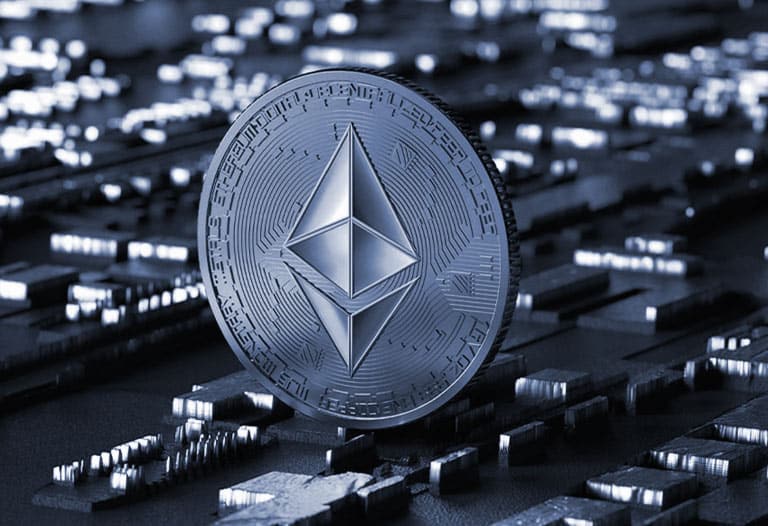
Table of Contents
ToggleIf you are one of the users interested in Ethereum, you have probably heard about the Arrow Glacier update. The said update was implemented in block number 13,773,000 on December 9, 2021. In this article we will tell you all about what this update is and how it works, but first we will make a brief introduction to the Ethereum network.
If you are a new user or you are not informed about what Ethereum is, the first thing you should know is that it is a platform designed to allow it to offer its users a wide variety of functions. This platform employs DApps and smart contracts for its operation. In short, the Ethereum network follows the decentralized model of Bitcoin, but differs in that it offers countless services and possibilities. Ethereum’s platform describes itself as a global computer that has numerous nodes and employs various programming languages. For example, the specialized language known as Solidity is used to write smart contracts.
To improve this network, some updates have been implemented since its launch, however, some stand out more than others and that is the case of the Arrow Glacier update. It is a fairly simple improvement that focuses on delaying the network difficulty bomb. This makes it easier for developers to have more time to launch the Ethereum 2.0 network. Attempting to extend Ethereum’s time bomb is a regular feature of its updates. Initially, this update was supposed to be done in December 2021, however, after the London hard fork it has been delayed, although it is very close.
If we look at the Arrow Glacier update in detail we will find great similarities with the previous update of January 2020, called Muir Glacier. This update was also notable for delaying the time bomb. What they both have in common is that they both contain an Ethereum Improvement Proposal or EIP. This element is used to delay the “ice age”. It should be noted that these have not been the only updates of this type, the Constantinople, Byzantium and London updates also included extensions to the difficulty bomb.
What is the Ethereum difficulty bomb?
One of the main features of the Ethereum blockchain is that it employs a consensus mechanism called Proof of Work (PoW). This mechanism leads to users validating transactions using computational power to solve mathematical problems. Like everything else, this process has a cost in the creation of consensus. This protects the network from attacks and users with bad intentions.
To achieve this performance, a difficulty pump was included in Ethereum. By “difficulty bomb” we mean the increasing complexity of the mathematical problems in the proof-of-work mining algorithm of the Ethereum network. The more difficult these calculations become, the longer block times occur than we are used to and the rewards for miners will be decreasing. This pump is responsible for gradually increasing the difficulty of the mathematical problems. This leads to it becoming more and more costly to successfully mine a block.
Like all bombs, this one will eventually “explode”. The explosion will make it virtually impossible to validate transactions and add new blocks. After this event, mining the Ethereum blockchain will become really expensive. At first glance it seems pointless to implement this bomb, however, it was implemented for two very important reasons; to help motivate the development of Ethereum 2.0 and the transition to the Proof of Stake (PoS) model and the second reason was to force miners to implement the upgrade that gives way to the new PoS blockchain, all taking into account that they will no longer be able to mine Ether (ETH) on the old PoW version of Ethereum. This prevents the creation of two conflicting Ethereum networks as a result of a hard fork.

What does EIP mean?
As mentioned in one of the previous sections, EIP stands for Ethereum Improvement Proposal. An EIP has the ability to propose any improvement or change to the Ethereum network. Any user has the ability to create an EIP. It will be reviewed by the Ethereum community, which consists of a board of editors and Ethereum developers.
For an EIP to be included in an update, it must go through the approval process and pass successfully. Each EIP has technical requirements for a specific change depending on the particular EIP format. It should be noted that the Arrow Glacier upgrade contains only one EIP, which is EIP-4345. This EIP has a single goal, which is to extend the deadline before the ice age of Ethereum mining.
What will be the consequences of the new update?
We as standard network users will not notice any noticeable changes. This is because the network’s confirmation times have remained constant (approximately 13 seconds) over the last year. On the other hand, if you are a miner or node, you will notice the difference, mainly due to the fact that you will need to upgrade your Ethereum client to the latest version. Failure to do so will result in the client pointing to the old Ethereum fork, which will no longer be officially supported by the community.
Although the Arrow Glacier upgrade is quite small, it is very important. Without it, the network would have a high cost of mining and would be very slow to use. Also, it is quite an exciting update for the Ethereum community.


